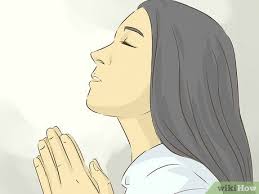Luke arranges his material in a very deliberate way. There’s no chronological reason why Chapter eleven verse one needs to follow on from the preceding scene, therefore Luke must be wanting to stress something to teach us about the Way of Jesus.
Mary was an opportunist ~~> and she was commended for it.
Jesus entered her village and was welcomed by her sister into her home. Knowing Jesus’ reputation, and sensing his character, she sat among the men and received his teaching alongside the men. She broke her culture’s social conventions for the sake of being near and learning from Jesus, and rather than being rebuked for it she was rewarded. In Jesus’ way there is no separation based on sex, or class or culture; all of us have equal opportunity to enjoy intimacy with Jesus. In Jesus’ way there is no divide of professional/amateur or clergy/laity, in fact all of us are described as being priests by the apostle Peter (1 Peter 2:9). All of us can come into his presence.
Jesus calls Mary’s behaviour ‘necessary’. There are many important things to do in life and complexity and busyness seem to increase with every passing year but Jesus says – only one thing is necessary: choosing to sit at his feet.
As when you construct a building, what’s foundational is of primary importance; so for the apprentice of Jesus. Sitting at the feet of Jesus is where it all begins and ends. We will get up and walk with Jesus, go on mission with Jesus, work a job with Jesus and live in community with Jesus but we must always come back to sitting before Jesus.
Luke, and Jesus, often use comparison and contrast to teach about and demonstrate the Way of Jesus. Here we see Mary contrasted with Martha and then (more subtly) we see Martha’s hospitality contrasted with the friend who’s family are asleep. In one comparison Martha comes off poorly, but in another she’s the example.
Sandwiched between the two comparisons is Jesus’ example of prayer, a model that emphasises intimate and familial relationship.
“If I was to become a Christian, what practical difference would it make to my life? I mean, when I wake up tomorrow what do I do?”
As a Jew Jesus observed the established tradition, practising set times of prayer in the morning, afternoon and evening and the early church imitated him by doing the same.
Consider Acts 2 (a prayer meeting at 9am), Acts 3:1 (Peter & John on their way to afternoon prayer), and Acts 10:9 (Peter on the rooftop praying around noon). Look at the prayers on page 57 and try setting reminders in your calendars to help you to do the same.
“As for me, I call to God, and the LORD saves me. Evening, morning and noon I cry out in distress, and he hears my voice.”
Psalm 55:16-17
In his book ‘Atomic Habits‘ author James Clear writes: we don’t rise to the level of our goals, we fall to the level of habits.
Start small and be as specific as you can about what you’re going to and when you’re going to do it.
Habit Stacking
One of the easiest and most effective ways you can do this is by adding ‘micro-habits’ onto already existing habits in your life; habits such as getting dressed or putting on your shoes, making a morning coffee or switching off your computer before lunch.
In between putting your foot into each shoe why not recite a prayer, or whilst you wait for the kettle to boil read a verse of scripture from a Bible left open on the counter top?

